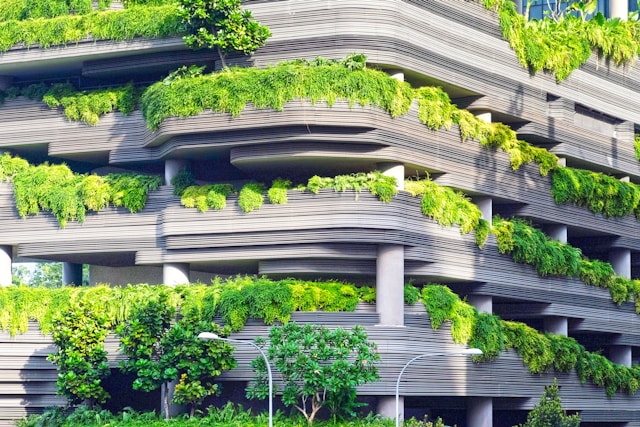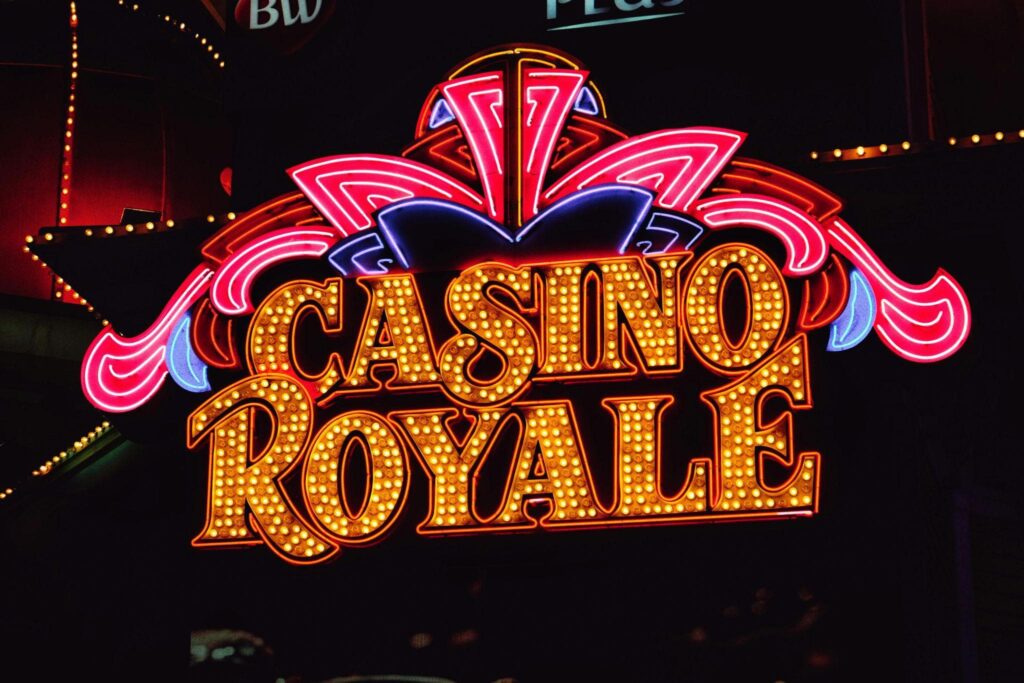
Ever walked into a casino and felt a certain buzz, a rush of excitement that seems to hum in the very air? It’s no accident. From the moment you step through the doors, you enter a meticulously crafted world —a sensory symphony orchestrated to captivate and engage. The Architecture of Casinos: Designing Spaces That Shape Player Experience isn’t just about constructing buildings; it’s about a profound understanding of human psychology, translated into bricks, lights, and sounds. Every curve of a wall, every shimmer of light, every strategically placed game, and even the subtle scent wafting through the air play a pivotal role in influencing your mood, guiding your movements, and ultimately encouraging prolonged engagement. This masterful design applies whether you’re observing the thrill of a classic plinko game UAE attraction, or simply strolling through the opulent halls of a grand resort. These aren’t just entertainment venues; they are psychological landscapes designed with a singular, powerful purpose.
The Psychology Behind Casino Design
At its heart, casino design is a fascinating blend of art and behavioral science. It delves deep into the foundational psychological principles that govern human decision-making, emotional responses, and sensory perceptions. Designers aren’t merely creating aesthetically pleasing spaces; they’re crafting environments engineered to leverage our inherent cognitive biases. Think about it: how do you feel when you’re immersed in a dazzling, vibrant space where the outside world seems to melt away? That’s by deliberate design. The overarching goal is to induce a state of heightened arousal, diminish your awareness of the passage of time, and subtly encourage you to focus solely on the games at hand. It’s a delicate yet potent dance between exhilarating stimulation and pervasive comfort, carefully choreographed to maximize your “playtime” and, yes, ultimately swell the house’s revenue.

Understanding Player Behavior
Have you ever noticed how remarkably easy it is to lose track of time in a casino? That, my friend, is never a coincidence. Designers meticulously study common player behaviors to create spaces that subtly guide and, at times, manipulate them. Their primary objective is to encourage continued play, making it feel effortless, almost natural, to transition from one alluring game to the next. The layout often cleverly prevents you from seeing clocks or windows, effectively severing your connection to the outside world and the pesky, intrusive concept of linear time. This deliberate reduction of awareness of time keeps you deeply in the moment, focused intently on the immediate thrill of the game.
Furthermore, some designs are specifically crafted to promote social interaction around lively games, such as craps tables, fostering a thrilling sense of camaraderie and shared excitement. Others, conversely, like the secluded, hushed areas for high-stakes poker, promote intense isolation, allowing for singular, unwavering focus. Every single decision, from the precise width of a pathway to the exact height for a ceiling, is a calculated, strategic move intended to influence how you move, how you feel, and, critically, how long you choose to stay and play.

Key Architectural Elements and Their Impact
Now, let’s peel back the layers and examine the actual elements that bring this intricate psychological blueprint to vivid life. These aren’t simply aesthetic choices; they are meticulously engineered components, each imbued with a specific mission to impact the player experience profoundly. It is truly remarkable how seemingly minor details can have such a powerful and pervasive effect on human behavior and decision-making within these highly controlled environments.
The Strategic Use of Lighting
If architecture provides the very skeleton of a casino, then lighting is undoubtedly its pulsating heart and soul, dictating its intrinsic mood and kinetic energy. The strategic use of lighting, encompassing both natural light (where permitted) and, predominantly, meticulously controlled artificial illumination, is paramount. Bright, scintillating lights are often employed to create an atmosphere brimming with excitement and buoyant optimism, subtly conveying the feeling that a big win is perpetually just around the corner. Slot machine areas, in particular, frequently feature dazzling, pulsating light displays that draw your eye powerfully, amplify the inherent sense of urgency, and magnify the perceived reward. Conversely, more subdued, intimate lighting in high-roller salons might evoke a sense of refined exclusivity and serious, focused play. Designers meticulously control every facet – color temperature, precise intensity, and exact placement – to expertly highlight specific games, cleverly obscure harsh realities, and, perhaps most importantly, further obscure the passage of time. There’s no jarring harsh daylight to remind you how many hours have slipped by; only a constant, vibrant, and timeless glow.
Layout and Flow: The Maze Effect
Casinos are rarely designed with straightforward, predictable, grid-like layouts. Instead, they ingeniously embrace what is widely known as the “maze effect.” You’ll inevitably notice winding paths, strategically positioned gaming tables acting as magnetic visual anchors, and a distinct, deliberate absence of straight lines leading directly to visible exits. The ultimate goal? To maximize player circulation, ensuring that you instinctively pass by as many tempting, sparkling games as humanly possible before you finally find what you’re looking for, or before you even begin to contemplate the idea of leaving. Circular pathways are a widespread design feature, cunningly making you feel as though you’re constantly discovering exciting new areas rather than simply traversing the same old territory. The deliberate lack of external views ingeniously disconnects you from the outside world, powerfully reinforcing the immersive, self-contained bubble of the casino. Even the precise placement of attractions, such as inviting restaurants, dazzling bars, conveniently located restrooms, and, yes, even the elusive exits, is painstakingly considered to ensure a seamless transition through more gaming areas to reach them. Every single step you take is a potential encounter with another thrilling opportunity to play.
Sensory Design: Sound, Scent, and Texture
The casino experience transcends mere visual appeal; it is a full-body, profoundly immersive sensory journey. Sensory design extends far beyond what you simply see, genuinely tapping into auditory cues, olfactory stimuli, and even tactile textures to create a powerful, all-encompassing environment. Consider the ubiquitous, almost hypnotic slot machine jingles – those celebratory, often infectious tunes that joyfully signal a win, however modest, and are frequently designed to be heard across the entire floor, thereby creating a pervasive sense of constant activity, perpetual possibility, and impending triumph. The chosen ambient music is invariably upbeat and stimulating, yet carefully modulated to avoid becoming distracting. Then there’s the nose: have you ever detected a pleasant, almost indescribable scent subtly wafting through certain casinos? These are frequently subtle, custom-blended fragrances, meticulously engineered to evoke feelings of sheer luxury, refreshing cleanliness, or even electrifying excitement. And finally, tactile textures – the plush, yielding carpets, the smooth, cool polished wood of the bars, the exquisitely soft felt of the game tables – all contribute significantly to the pervasive feeling of opulence and comforting ease, subtly encouraging you to linger and feel entirely at home within this designed world, much like the meticulously crafted atmosphere around a high-stakes plinko game UAE attraction.
Beyond the Gaming Floor: Ancillary Spaces
While the exhilarating gaming floor is undeniably the main event and the pulsating heart of any casino, modern casinos are frequently vast, sprawling resort complexes that seamlessly integrate a myriad of meticulously planned ancillary spaces. These areas – encompassing luxurious hotels, gourmet restaurants, high-end retail shops, and vibrant entertainment venues – are not simply added amenities. They are, in fact, meticulously designed to complement the primary, overarching goal of the casino: to keep visitors happily on-site, deeply engaged, and continuously spending. Every single square foot, from the grandest ballroom to the smallest coffee shop, is considered an integral part of the grand, cohesive strategy.
Integrating Luxury and Escape
Walk into the opulent lobby of a high-end casino hotel, and you’re immediately struck by an almost overwhelming sense of grandeur and meticulous attention to detail. High-end finishes, breathtakingly opulent decor, and an undeniable sense of exclusivity are not merely for show; they are integral to the psychological player experience. These meticulously crafted elements, found not only in plush hotel lobbies but also in Michelin-starred fine dining establishments and serene, indulgent spas, contribute significantly to the overall allure of the casino resort. They are designed to create a powerful, enduring feeling of being in a truly special, indulgent, and extraordinary place – a genuine escape from the mundane routines and pressures of everyday life. This pervasive feeling of luxury inherently encourages longer stays and, by direct extension, dramatically increased spending across all segments of the resort, extending far beyond just the gaming tables. It’s about selling a dream, a lifestyle, not just a game.
The Role of Entrances and Exits
This might sound surprisingly trivial, but the architectural design of a casino’s entry and exit points is, in reality, incredibly strategic and often quite cunning. You’ll frequently find that these pathways are deliberately subtle or even confusing. Why? To make the act of leaving feel less straightforward, less appealing, even a little disorienting. You won’t typically encounter grand, brightly lit exit signs loudly shouting “This Way Out!” Instead, you might find yourself navigating winding corridors, or having to pass through more tempting gaming areas to find your way back to the outside world eventually. This ingenious tactic effectively prolongs a player’s stay, keeping them deeply immersed within the captivating casino environment for as long as humanly possible. It’s a remarkably clever trick of the trade, demonstrating the architects’ profound understanding of human inertia. Here are some common design tactics employed:
- Subtle signage and hidden exits that blend seamlessly into the opulent decor.
Case Studies and Famous Examples
To truly grasp the profound mastery of casino architecture, let’s take a moment to examine some real-world examples. These aren’t merely buildings; they are living, breathing testaments to the immense power of design to shape human experience, guide behavior profoundly, and influence significant economic outcomes. From the historically legendary to the cutting-edge marvels of modernity, these structures narrate a compelling story of psychological manipulation through design.
Iconic Casino Designs and Their Secrets
Consider the enduring allure of the classic Las Vegas Strip casinos – their sheer, overwhelming scale, the intricately themed facades, the seemingly endless, labyrinthine interiors. Take The Venetian, for instance, with its breathtaking recreation of Venice: every authentic gondola ride, every exquisitely frescoed ceiling, every meticulously laid cobblestone pathway contributes to an overwhelming, immersive illusion, effectively transporting players to an entirely different world where the very concept of time can easily, almost magically, fade into irrelevance. Alternatively, shift your focus to the more modern, streamlined, and overtly luxurious designs found in burgeoning gambling hubs, where minimalist elegance and advanced technological sophistication merge to create a high-end, futuristic ambiance. These iconic designs are never accidental; their unique design elements are painstakingly planned and executed to draw you in, keep you utterly enchanted, and subtly yet powerfully manipulate player experience through a masterful combination of grandeur, pervasive comfort, and calculated sensory overload. They are carefully curated, self-contained worlds, each possessing its unique secrets to maximizing success.

The Ethical Implications of Persuasive Architecture
While the sheer ingenuity and undeniable effectiveness of casino architecture are truly remarkable, this robust design also undeniably raises significant ethical questions. When design becomes so potent in its ability to influence human behavior, what inherent responsibility do architects and casino operators truly bear? The very effectiveness of these designs in maximizing revenue can, unfortunately, also contribute directly to fostering and exacerbating problem gambling among vulnerable individuals.
Balancing Profit and Responsibility
This is the inherent, often uncomfortable, tension at play: the relentless drive to maximize revenue through incredibly clever design versus the profound moral obligation to mitigate potential harm. How, then, do we find a sustainable, ethical middle ground? It is undoubtedly a complex and multi-faceted issue. Some proponents advocate for design adaptations that actively promote responsible gaming, incorporating more precise, more prominent indications of time, more easily discoverable and visible exits, or cultivating less overtly stimulating and overwhelming environments. Regulations also play a crucial role, setting industry-wide standards for design features that might otherwise be excessively manipulative. The persistent challenge lies in finding a delicate yet firm balance between the undeniable business objectives of the thriving casino industry and a sincere, overarching commitment to broader societal well-being and public health. It’s a critical conversation that demands more open, honest, and proactive engagement from all stakeholders.
CONCLUSION
The intricate, often covert, power of casino architecture to profoundly influence human behavior is genuinely remarkable, serving as a potent testament to the profound impact of meticulously crafted environmental design on our choices, moods, and perceptions. We’ve journeyed through the deliberate, almost theatrical orchestration of lighting, the strategic “maze effect” embedded within layouts, and the pervasive, often subconscious influence of sensory elements – all meticulously crafted to shape and guide the player experience. This isn’t just about constructing elaborate buildings; it’s about ingeniously engineering human interaction, from the thrilling, cascading drop of a Plinko game chip in the UAE to the breathtaking, opulent grandeur of any new resort on the global stage. As the dynamic industry continues its relentless evolution, the future of casino design unequivocally demands a more thoughtful and balanced approach – one that steadfastly continues to innovate in engagement and allure, while also increasingly prioritizing player well-being alongside the traditional pursuit of profit. After all, a truly successful space, in the long run, fosters not just exhilarating excitement, but also an inherent sense of security, responsibility, and overall positive experience for its valued visitors.




